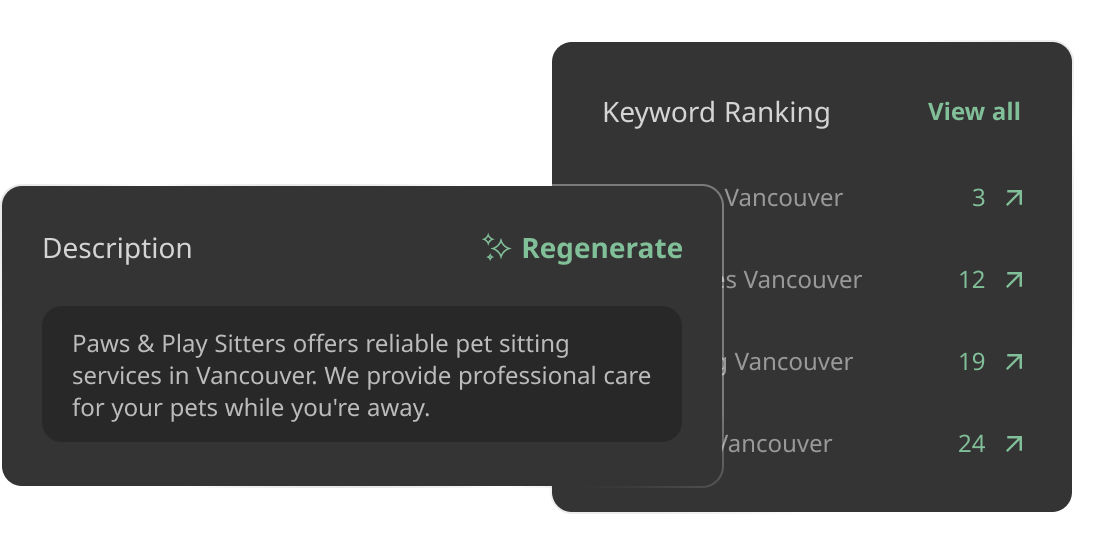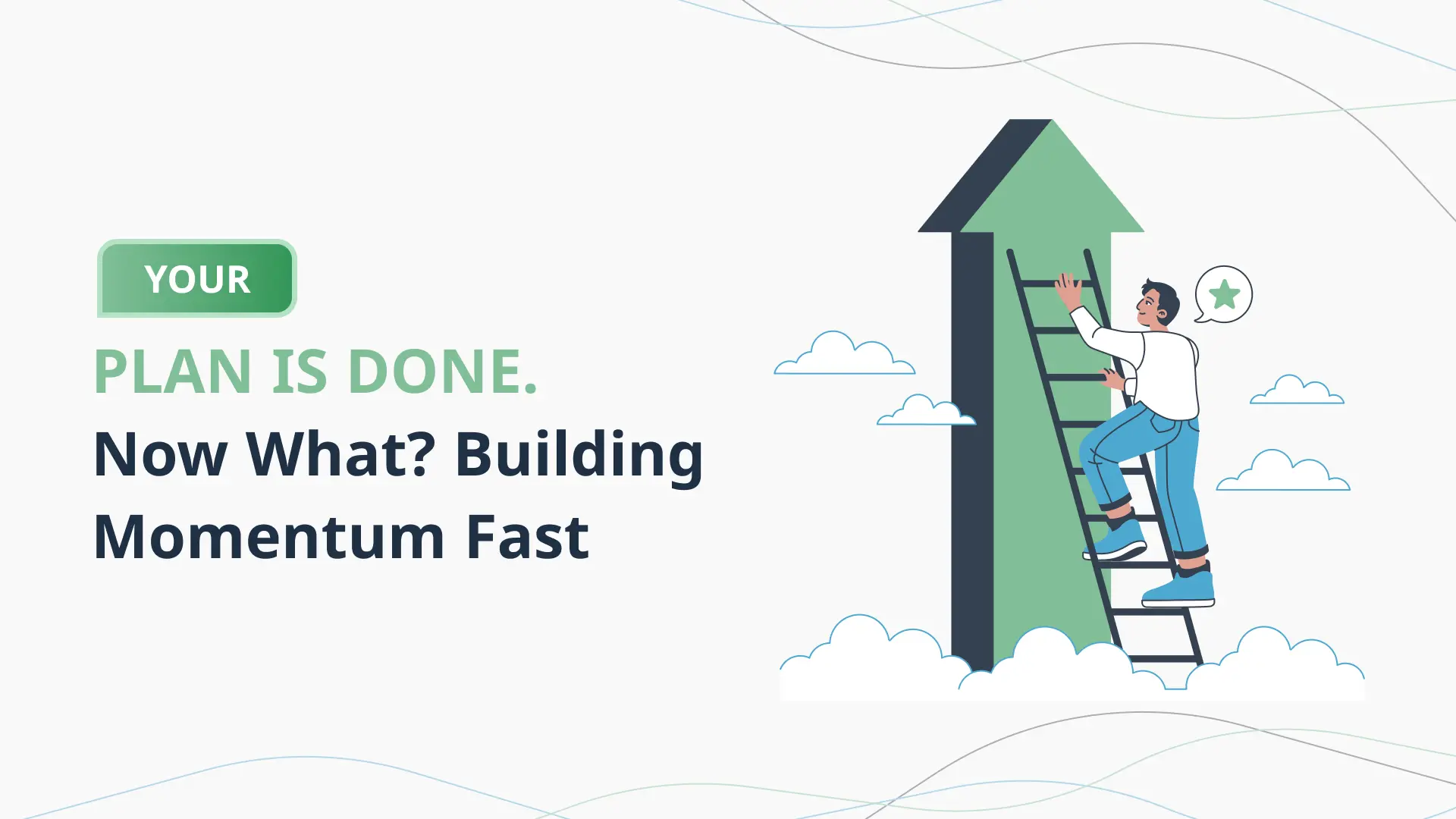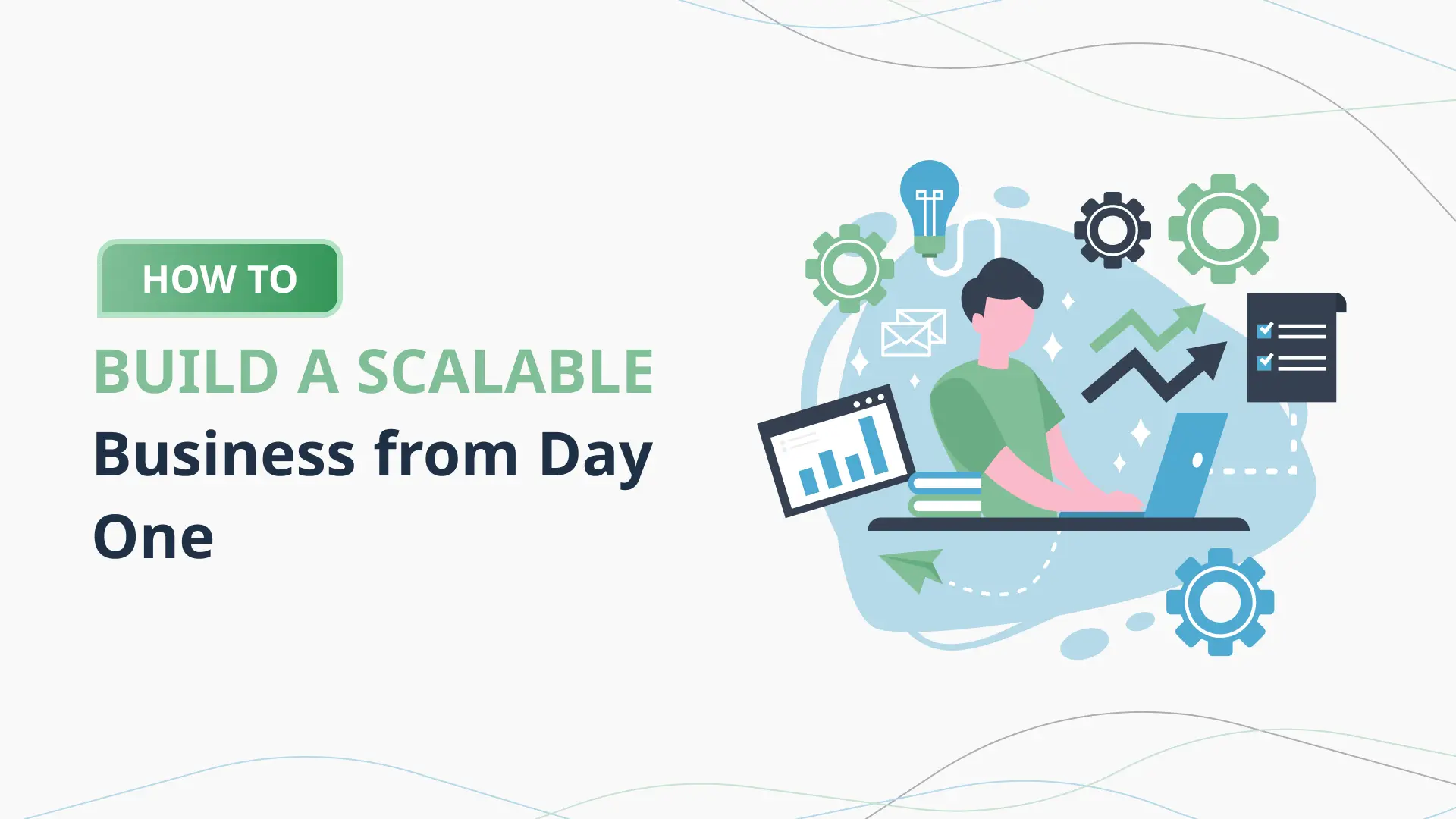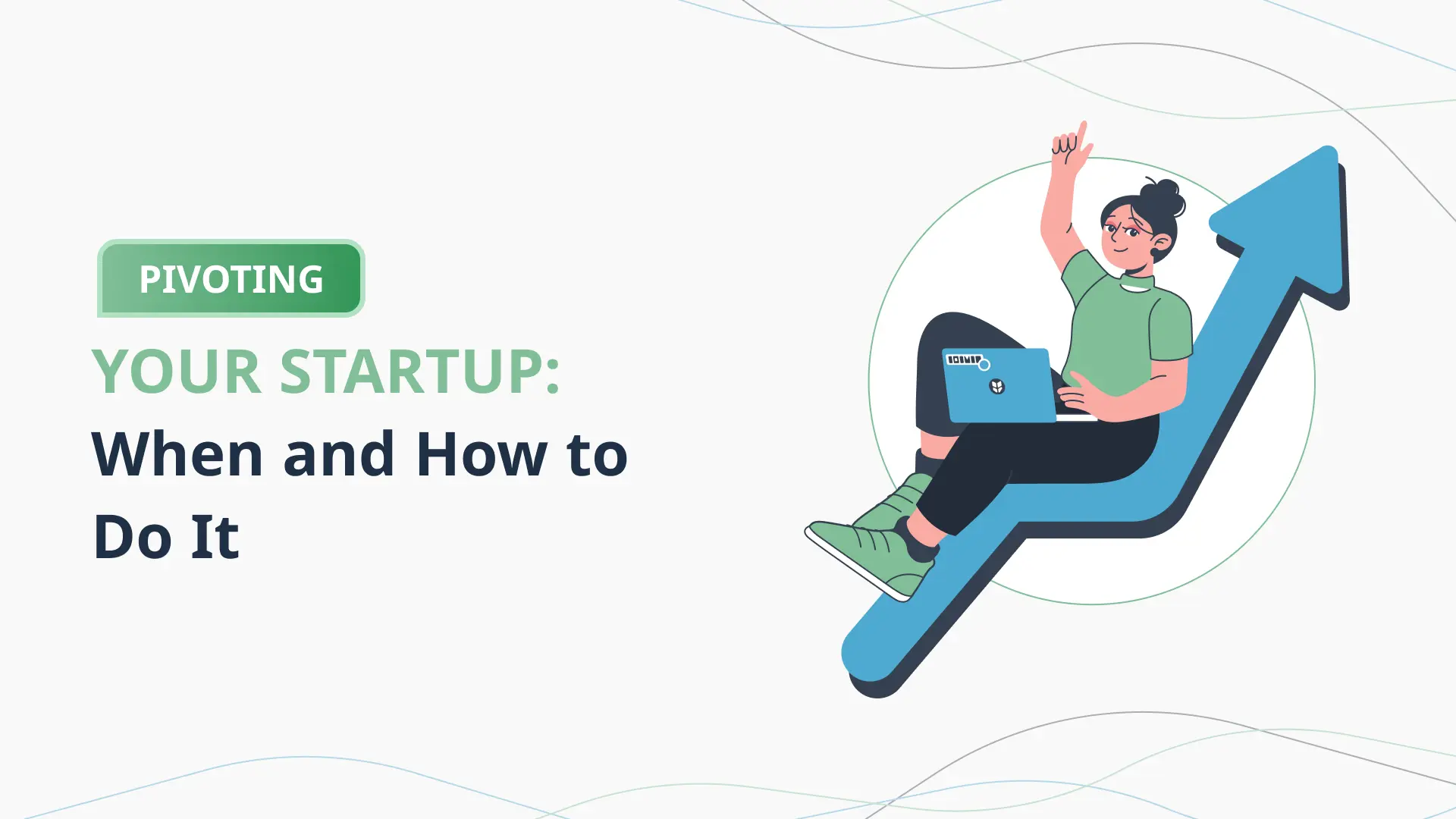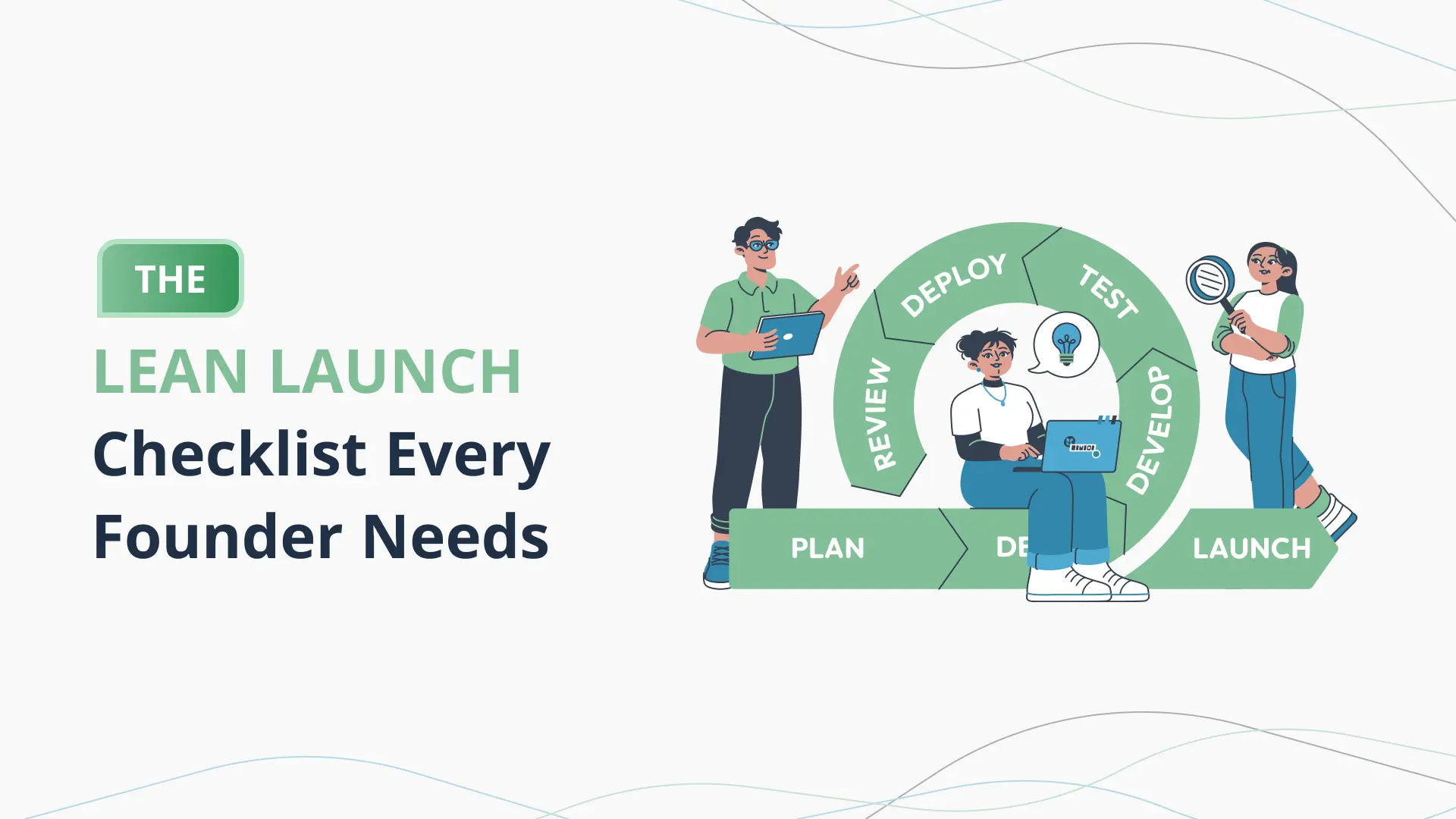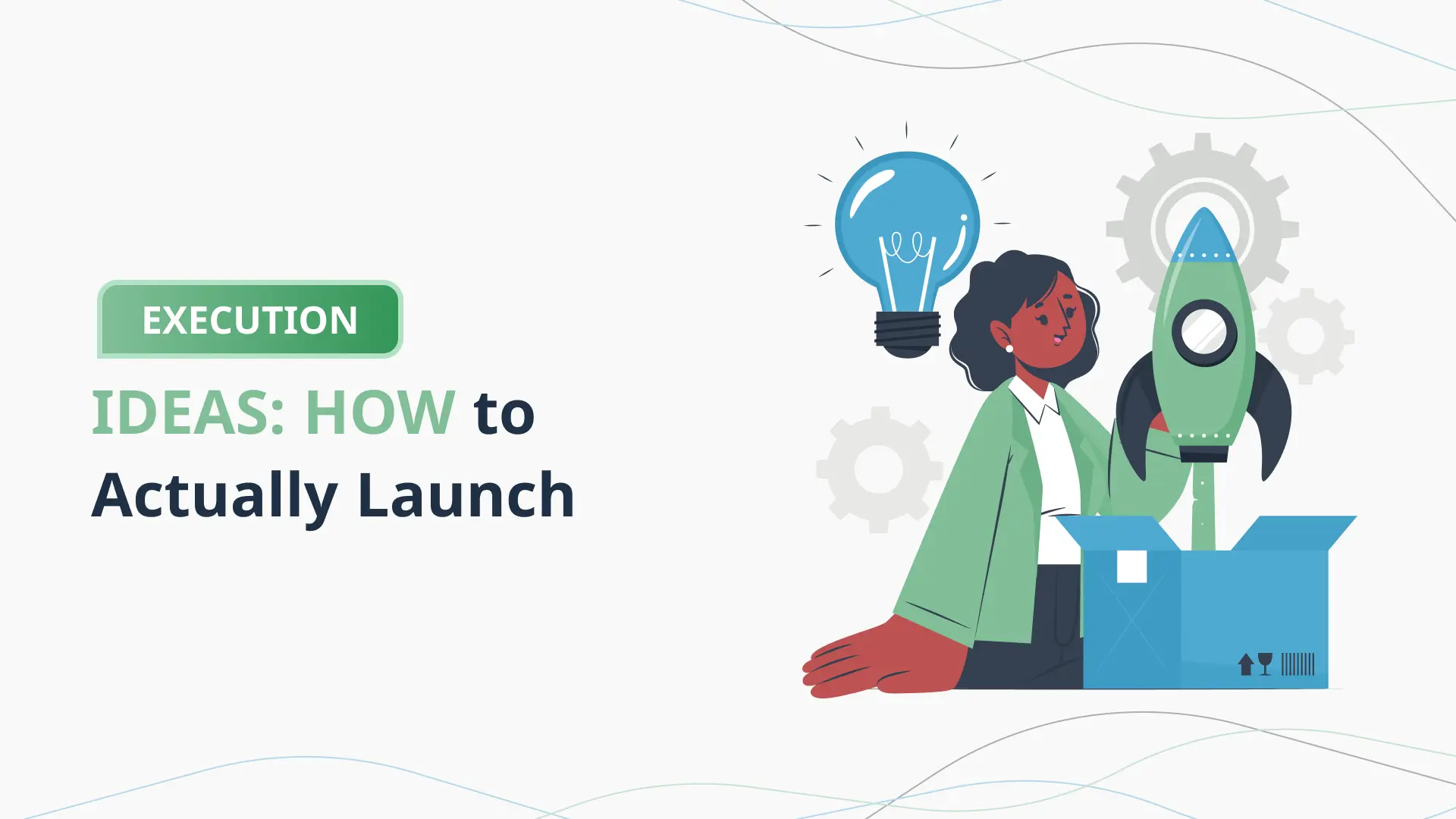Lean Business Planning: Do More with Less
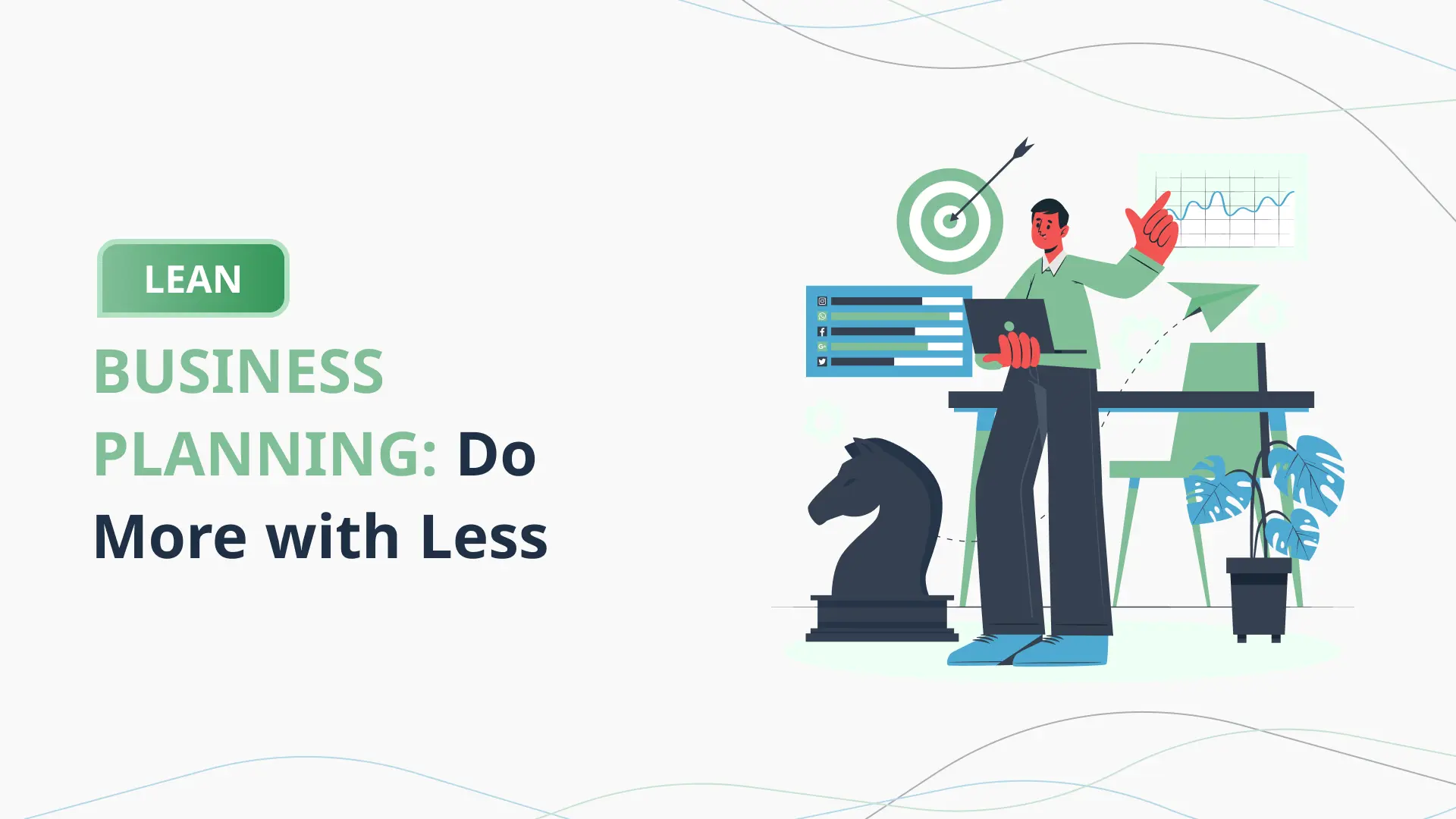
Introduction: Lean Business Planning Is the Smart Way to Start
Building a startup isn’t about writing 40-page documents or trying to predict what your business will look like five years from now.
In fact, the most successful early-stage founders don’t plan more—they plan smarter.
They use lean business planning to stay focused, move fast, and adapt without chaos.
Because in the early days, things change quickly. Customers say one thing and do another. Your original idea might pivot completely. And spending weeks locked in a Google Doc polishing a traditional business plan? That’s time you’ll never get back.
Lean business planning solves that.
It’s not about skipping planning—it’s about planning just enough to make better decisions, test your ideas, and attract the right investors or team members without wasting resources.
And if you’re an early-stage founder trying to juggle product development, fundraising, and customer validation, this might be the most important mindset shift you can make.
In this post, you’ll learn:
- What lean business planning actually is (and what it’s not)
- How it helps startups avoid early failure
- A step-by-step process to build a lean plan in days—not weeks
- The biggest mistakes founders make when “going lean”
- A real example of a founder who used lean planning to raise capital and launch faster
- How tools like PlanVista make lean planning effortless (and investor-ready)
If you’re looking to cut through the noise, skip the fluff, and create a flexible business plan that moves with your startup—not against it—this post is for you.
Because in the early stages, less truly is more.
Let’s explore how lean business planning helps you do more with less—and still win.
What Is Lean Business Planning (And Why It Matters Now More Than Ever)?
Lean business planning is not about skipping planning altogether.
It’s about cutting the fluff and focusing only on the key elements that help you make better, faster decisions.
It’s the opposite of traditional business planning, which often involves dozens of pages, dense financial models, and rigid forecasts that are outdated the moment they’re printed.
In lean business planning, your focus shifts to:
- Clarity over detail
- Agility over perfection
- Real-time adjustments over static documents
The Core Idea: Build, Measure, Learn—Then Plan Again
Inspired by Lean Startup principles, lean business planning embraces the idea that your business is a set of assumptions that need testing, not a locked-in blueprint.
Your plan is a living document—always evolving based on what you learn from customers, market data, and experiments.
Why Lean Planning Matters More Than Ever
1. Markets Move Faster Than Ever
In today’s startup world, opportunities don’t wait for perfect plans.
If you spend months perfecting a traditional plan, your market might have already shifted.
Lean planning lets you respond to changes in real-time—keeping your plan relevant and actionable.
2. Investors Want Agility, Not Overconfidence
Early-stage investors know your forecasts will be wrong.
They’re not looking for rigid five-year models—they want to see that you understand your assumptions, know your key metrics, and have a plan to test and adapt.
A lean plan shows them you’re thinking like an operator, not just a dreamer.
3. Founders Have Limited Time and Resources
You can’t afford to spend weeks on planning when your cash runway is counting down.
Lean business planning keeps you focused on what really matters:
- Your customer
- Your problem-solution fit
- Your go-to-market experiments
- Your key financial levers
4. It Aligns Your Team (Without Overwhelming Them)
Long, complex business plans confuse teams.
A lean plan acts as a simple, clear north star—helping everyone align on goals, key milestones, and priorities.
Lean Planning Is Not “No Planning”
Some founders confuse “lean” with “winging it.”
That’s a mistake.
Lean planning is still planning—but stripped down to the essentials:
- Clear value proposition
- Defined customer segments
- Simple business model
- Early traction metrics
- Key financial assumptions (not detailed forecasts)
It’s about planning with focus—and adjusting relentlessly.
How to Create a Lean Business Plan (Step by Step Process)
Creating a lean business plan doesn’t have to feel overwhelming.
In fact, the whole point is to get it done fast—so you can start testing, learning, and adjusting.
Here’s a simple, founder-tested process to create a lean business plan in a day (or less).
Step 1: Define the Problem (And Who Has It)
Every good business starts with a painful, urgent problem.
Your plan should begin by clearly stating:
- What problem are you solving?
- Who specifically experiences this problem (your target customer)?
- Why is this a priority for them now?
Keep it short. One or two sentences.
Step 2: Describe Your Solution (Simply)
Next, explain how your product or service solves that problem.
Focus on outcomes, not features.
- What does your solution help customers do better, faster, cheaper?
- What’s your unique approach?
Again, keep it tight—this is not the place for product specs.
Step 3: Outline Your Business Model
At the heart of lean planning is clarity on how you’ll make money.
- What’s your pricing model?
- How do you charge (SaaS, transaction fee, subscription, etc.)?
- What are your key costs?
You don’t need a 20-line financial model here—just the basics.
Step 4: Identify Your Early Go-to-Market Strategy
How will you get your first paying customers?
List your top 2–3 acquisition channels.
- Is it paid ads?
- Cold outreach?
- Partnerships?
- Influencer marketing?
Remember, this will evolve—your goal is to start with what you believe will work and adjust based on results.
Step 5: Highlight Early Traction or Validation
If you have:
- Early users
- Signups
- Letters of intent
- Pre-orders
- Feedback
Include it. Even small signals can build confidence.
If you’re pre-launch, outline how you plan to get early proof points (e.g., pilot programs, beta launches).
Step 6: Sketch Your Key Metrics
Lean plans focus on leading indicators, not fantasy forecasts.
Examples:
- Cost to acquire a customer (CAC)
- Lifetime value (LTV)
- Conversion rate from free to paid
- Monthly active users (MAU)
List the 3–5 metrics you’ll track to know if you’re on the right path.
Step 7: Set Short-Term Milestones
End your plan by setting clear, 30/60/90-day milestones.
Examples:
- Launch MVP
- Get first 20 paying users
- Run 3 customer interviews per week
Milestones keep you accountable and make your plan actionable.
Bonus Step: Keep It on One Page
A lean business plan should fit on one page or slide deck.
If you can’t fit it on one page, you’re probably adding unnecessary detail.
Common Mistakes Founders Make When Trying to Plan Lean (And How to Avoid Them)
Lean business planning is designed to help you move fast without skipping the thinking.
But many founders confuse lean planning with “no planning”—and that’s where trouble starts.
Here are the most common mistakes founders make when trying to go lean—and how to sidestep them.
Mistake 1: Thinking Lean Means No Planning
Too many founders hear “lean” and think they can just build, launch, and figure it out later.
They skip defining their business model, go-to-market strategy, or customer segments.
Why it’s a mistake:
You end up chasing the wrong customers, wasting time on features no one wants, and burning cash without traction.
Fix:
Lean planning still means having a plan—just a fast, flexible one that focuses on the essentials.
Mistake 2: Overloading the Plan with Details
Ironically, some founders swing the other way—trying to cram everything they know into a “lean” plan.
They add long market research, detailed competitive analysis, or complex financial forecasts.
Why it’s a mistake:
You lose speed and focus. The plan becomes a mini business plan—and you get stuck tweaking it instead of testing it.
Fix:
Stay disciplined. Focus only on:
- Problem
- Solution
- Business model
- Go-to-market
- Key metrics
- Short-term milestones
Nothing more.
Mistake 3: Treating the Plan as a One-Time Task
Lean planning is supposed to be dynamic.
But many founders write the plan once and never touch it again.
Why it’s a mistake:
You miss the chance to adjust your assumptions based on real-world feedback. Your plan gets stale—and irrelevant.
Fix:
Review your lean plan weekly or monthly. Adjust based on what you learn from customers, experiments, and data.
Mistake 4: Forgetting to Share the Plan with the Team
Some founders keep their lean plan to themselves—assuming the team doesn’t need to see it.
Why it’s a mistake:
Your team ends up misaligned, working on things that don’t support your key goals.
Fix:
Make your lean plan a living, visible document for the whole team. Use it in standups, planning meetings, and retrospectives.
Mistake 5: Ignoring Financial Basics
Going lean doesn’t mean ignoring your burn rate or unit economics.
Founders who skip this often wake up to ugly surprises—like running out of cash months earlier than expected.
Why it’s a mistake:
Even in lean mode, you need to know your runway, CAC, and basic financial drivers.
Fix:
Keep your financial model lean but alive. Use simple tools (like PlanVista) to forecast burn, CAC, and breakeven points.
Real Founder Example—How Lean Planning Helped Turn an Idea Into a Funded Business
Let’s take the theory into the real world.
Meet Elena, Founder of FreshFare
Elena had an idea: make healthy, chef-crafted frozen meals accessible to busy professionals who want better nutrition but hate meal prep.
She had a personal connection to the problem—working late nights and settling for unhealthy takeout.
But when she first sat down to write a traditional business plan, she got stuck.
The research, financial modeling, and market analysis overwhelmed her.
She spent weeks in Google Docs and spreadsheets—without ever talking to a customer.
The Wake-Up Call: Over-Planning Without Action
After two months of “planning,” Elena realized she was no closer to testing her assumptions or finding customers.
She scrapped the 30-page plan and switched to a lean planning approach using tools like PlanVista.
The Lean Planning Pivot
Here’s how Elena reframed her process:
- Problem: Busy professionals want convenient, healthy meals—but current options are time-consuming or taste bland.
- Solution: Frozen gourmet meals, flash-frozen at peak freshness, ready in 10 minutes.
- Business Model: Direct-to-consumer subscription box; $89 per box, includes 5 meals.
- Go-to-Market: Start with Instagram ads targeting fitness enthusiasts and health coaches.
- Traction Goal: Pre-sell 100 boxes before launch via a simple landing page.
- Key Metrics: CAC, subscription conversion rate, churn rate.
She kept it all on one page.
No fancy decks. No complex projections.
The Results: Faster Validation, Smarter Pivots
Using her lean plan as her guide, Elena:
- Launched a simple pre-order campaign.
- Sold out 100 boxes in 3 weeks.
- Used customer feedback to tweak her menu and packaging.
- Realized her target customer wasn’t just professionals—it was fitness enthusiasts and new parents looking for meal convenience.
Because her plan was lean, she pivoted her marketing focus quickly—without feeling tied to outdated assumptions.
The Funding Win
When Elena went to pitch investors, she brought:
- Her lean plan, updated with real data and customer insights.
- Clear CAC and LTV numbers from her pre-orders.
- A traction story that showed she was learning fast and adapting.
The result?
She closed $150K in seed funding—without a 40-page plan.
The Lesson
Elena’s success wasn’t about skipping planning—it was about planning lean, acting fast, and learning constantly.
Her lean plan wasn’t a static document—it was a living sales and fundraising tool that evolved as she did.
And that’s the real power of lean business planning.
It lets you stay focused, move faster, and win with less.
How PlanVista Helps You Plan Lean (Without Cutting Corners)
Lean business planning sounds simple in theory—but without the right tools, it’s easy to either skip steps or slip back into bloated, overbuilt plans.
That’s where PlanVista comes in.
PlanVista is designed to help founders plan lean, stay agile, and still impress investors, partners, and customers—without wasting hours on formatting or second-guessing what to include.
Here’s how it helps founders like you embrace lean planning—without cutting corners.
1. Start Lean by Default (Not by Accident)
PlanVista is built around lean business planning principles.
It guides you to focus only on what matters most:
- Problem and solution clarity
- Business model basics
- Go-to-market strategy
- Key financial assumptions
- Early traction or validation
- Short-term milestones
You don’t have to guess what to include.
PlanVista prompts you to fill in just the right sections—and skip the fluff.
2. Build Living Plans You Can Update Anytime
Traditional business plans get stale fast.
PlanVista lets you keep your lean plan alive and dynamic:
- Update your assumptions as you learn from customers.
- Adjust your business model as you test pricing or channels.
- Refresh your traction data as you grow.
Because your plan is stored in the cloud, you can update it anytime—keeping your team, investors, and partners aligned in real time.
3. Turn Your Plan into Investor and Sales Assets Instantly
With PlanVista, your lean plan isn’t just an internal doc.
You can instantly:
- Export it as a clean, professional one-pager for cold outreach or investor intros.
- Turn it into a lean pitch deck, pulling directly from your plan.
- Create customer-facing versions for sales conversations or partnership pitches.
No extra formatting. No design tools needed.
You get the flexibility to turn your plan into whatever format your next conversation requires.
4. Built-in Financial Snapshots—Without Spreadsheet Headaches
Even in lean planning, you need basic financials.
PlanVista helps you:
- Forecast your burn rate, CAC, and runway.
- Model simple revenue projections.
- Visualize key metrics that investors and customers expect.
And it does it all with guided inputs—no spreadsheet wrangling required.
5. Keep Everyone on the Same Page (Literally)
Lean planning is about team alignment, too.
PlanVista lets you share your plan as a link or PDF—making it easy to keep your co-founders, early hires, advisors, and investors in sync as your business evolves.
Why Founders Love PlanVista for Lean Planning
- Fast to create, easy to adjust.
- No bloat, no guesswork.
- Always investor- and customer-ready.
- Keeps your focus on action—not endless planning.
Advanced Tips for Scaling Your Lean Plan as You Grow
Lean business planning works wonders in the early stage—but what happens when you start gaining traction?
Many founders struggle with the transition. They either abandon their lean approach for bloated traditional plans or fail to evolve their plan at all.
Here’s how to scale your lean plan as your startup matures—without losing its speed and clarity.
1. Add Depth, Not Bulk
As your business grows, you’ll need more data—but that doesn’t mean you need more pages.
Instead of adding fluff:
- Expand your financial model with real inputs and assumptions.
- Deepen your customer segmentation with validated personas.
- Update your go-to-market strategy based on actual performance data.
Think of it as adding layers to the same structure—not rebuilding from scratch.
2. Create Modular Plan Versions
As your team, investors, and partners grow, they’ll need different levels of detail.
Keep your original lean plan as the “core,” and then spin off:
- Investor versions with deeper financials and runway projections.
- Team versions focused on goals, KPIs, and execution plans.
- Sales/partner versions that highlight traction, market opportunity, and collaboration potential.
With a tool like PlanVista, creating multiple plan versions is simple—no need to rewrite everything from scratch.
3. Link the Plan to Weekly Execution
The most successful teams don’t just write plans—they use them.
Review your lean plan every month. Link your key milestones and metrics directly to your team’s weekly goals, product sprints, or standups.
This ensures your plan stays relevant, dynamic, and actually drives your decisions—not just sits in a folder.
4. Revalidate Every 90 Days
Your plan should evolve alongside your business. Set a quarterly cadence to revisit:
- Are our assumptions still true?
- What have we learned from customers?
- Where are we ahead—or behind?
A 90-day check-in keeps your lean plan alive—and keeps your team aligned.
Conclusion: Plan Lean, Move Fast, Win Smarter
If there’s one thing startup founders can’t afford in their early days, it’s wasted time.
And that’s exactly what bloated, outdated business plans create—time lost to perfectionism, guesswork, and over-analysis.
Lean business planning isn’t about skipping the thinking.
It’s about focusing on the thinking that matters most—right now.
It helps you:
- Clarify your customer’s pain and your unique solution.
- Identify your business model and early revenue assumptions.
- Map out how you’ll get your first customers.
- Set simple, trackable milestones to keep momentum.
- Stay nimble and ready to pivot as you learn.
When you plan lean, you create a document that serves you—not the other way around.
It becomes your compass, not your anchor.
The Founders Who Plan Lean Win More Often
Startups that survive—and thrive—aren’t the ones with the most polished business plans.
They’re the ones who:
- Validate their assumptions early.
- Stay obsessed with their customer’s problem.
- Iterate quickly when data tells them to.
- Align their team around simple, clear priorities.
- Use their lean plan as a living guide—not a dusty file.
Why Tools Like PlanVista Make Lean Planning Easier (And Smarter)
PlanVista is built for the founder who wants to plan smarter, not harder.
It gives you:
- Lean plan templates based on what actually matters.
- Built-in financial tools that simplify your numbers—without the spreadsheets.
- One-click exports that let you turn your plan into investor decks, one-pagers, and sales tools.
- A living plan that evolves as your startup does.
You don’t need to choose between lean planning and being investor-ready.
With PlanVista, you can have both.
Final Takeaway
The fastest path to traction, funding, and scale isn’t writing more pages.
It’s focusing on the right pages—and using them to guide your decisions, pitch your business, and win trust.
So if you’re still stuck tweaking that old-school business plan—or worse, winging it without a plan at all—now’s the time to shift gears.
Plan lean.
Move fast.
Win smarter.
Start your lean business plan today with PlanVista—free to try, no credit card required.
FAQs
PlanVista is a business planning tool designed to help founders create lean, investor-ready business plans and models.
Yes—PlanVista guides you through lean business planning, focusing on clarity, speed, and adaptability.
Absolutely—PlanVista includes easy-to-use forecasting tools for burn rate, CAC, and revenue modeling.
Yes—PlanVista lets you create one-pagers, pitch decks, and lean plans that work for investors, partners, and customers.
Yes—PlanVista offers a free trial with no credit card required.
